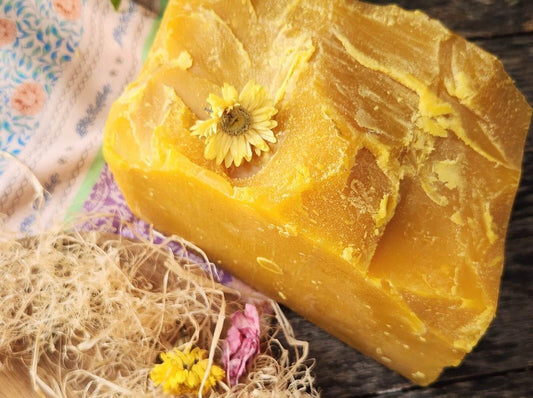The Varroa mite, a parasitic arachnid, has cast a shadow over the world of honeybees, wreaking havoc on colonies globally. In this in-depth article, we delve into the origins, dangerous nature, available treatments, and the latest advancements in research, along with proactive prevention measures against this formidable adversary.
Origins of the Varroa Mite
The Varroa mite (Varroa destructor) traces its origins to Asia, where it parasitized the Asian honeybee (Apis cerana). However, the shift to the European honeybee (Apis mellifera) marked a pivotal moment, as the mite found a new host, leading to the global spread of this devastating pest.
The Dangerous Nature of Varroa Mites
1. Parasitic Lifecycle
Varroa mites feed on the bodily fluids of honeybee pupae and adults. The female mite enters a brood cell before it is capped and lays eggs on the developing pupa. As the bee matures, the mites feed on its blood, weakening and often causing deformities.
2. Vector for Viruses
Beyond direct physical harm, Varroa mites act as vectors for various honeybee viruses, such as deformed wing virus (DWV). The mite's feeding facilitates the transmission of these viruses among bees, exacerbating the threat to colony health.
3. Devastating Colony Impact
The cumulative impact of Varroa infestation is disastrous for honeybee colonies. Weakened and virus-ridden bees result in a compromised immune system, reduced lifespan, and ultimately, the collapse of the colony if left untreated.
Available Treatments for Varroa Mite Infestation
1. Chemical Treatments
Chemical treatments, such as acaricides, have been a traditional approach to combat Varroa mites. These substances, applied in various forms, aim to eliminate or control mite populations within the hive. However, concerns about chemical resistance and residual effects on bees and honey have prompted a search for alternative solutions.
2. Biological Controls
Biological controls involve introducing natural predators or substances to mitigate Varroa mite infestations. Predatory mites, like Stratiolaelaps scimitus, and essential oils have shown promise in providing effective yet environmentally friendly alternatives to chemical treatments.
3. Integrated Pest Management (IPM)
IPM strategies combine various methods, including monitoring, selective breeding for mite resistance, and targeted treatments based on infestation levels. This holistic approach seeks to minimize the impact on honeybees and foster sustainable hive management.
Modern Research Advancements
1. Genetic Resistance
Modern research explores genetic factors that confer resistance to Varroa mites. Breeding honeybee colonies with inherent resistance traits has emerged as a promising avenue. Scientists are identifying and selecting bees with grooming behaviors or hygienic traits that reduce mite populations within hives.
2. RNA Interference (RNAi)
RNA interference, a cutting-edge genetic tool, is under investigation for its potential in controlling Varroa mites. By targeting specific genes essential for mite survival, researchers aim to develop RNAi-based treatments that disrupt mite infestations without harming honeybees.
3. Mite-Specific Viruses
Harnessing viruses that specifically target Varroa mites is an intriguing area of research. By developing viruses that only affect the mites, scientists aim to create targeted biological control methods that spare honeybees.
Prevention Strategies
1. Regular Monitoring
Early detection is key to managing Varroa mite infestations. Regular monitoring of hive activity, coupled with periodic mite checks, allows beekeepers to intervene promptly and implement appropriate control measures.
2. Hygienic Practices
Maintaining hive hygiene is crucial for preventing Varroa mite infestations. Regularly cleaning and replacing old comb, minimizing drifting between colonies, and ensuring proper spacing between hives all contribute to a less favorable environment for mites.
3. Selective Breeding
Beekeepers actively engaged in selective breeding programs focus on propagating colonies with resistance traits. By identifying and promoting bees that exhibit grooming behaviors or other resistance mechanisms, beekeepers contribute to the development of Varroa-resistant honeybee populations.
4. Educational Outreach
Educating beekeepers and the wider community about Varroa mite prevention and management is vital. Awareness campaigns, workshops, and accessible resources empower beekeepers to adopt best practices and contribute to the collective effort against Varroa infestations.
Conclusion
The Varroa mite poses a significant threat to honeybee populations worldwide, demanding continuous research, innovation, and vigilant hive management. From its origins in Asia to the cutting-edge genetic research aimed at its control, understanding the Varroa mite is pivotal for safeguarding the invaluable role honeybees play in our ecosystems. Beekeepers, scientists, and enthusiasts alike must unite in the ongoing battle against this formidable adversary to ensure the health and resilience of honeybee colonies for generations to come.
----
Photo: Alex Wild










